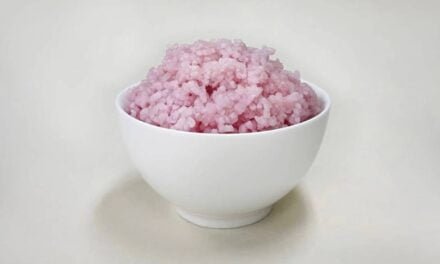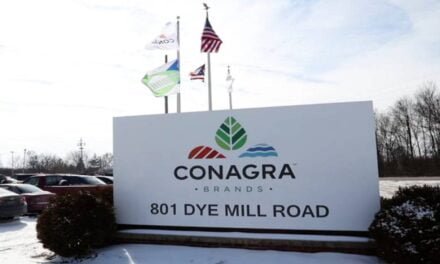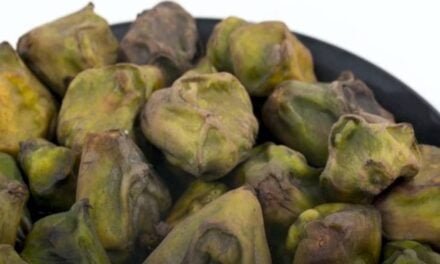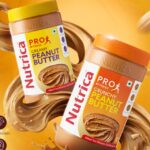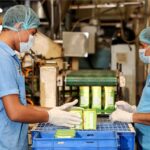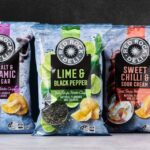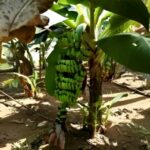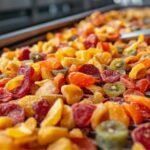The utility of animal byproducts in the cosmetic industry is a topic of interest and debate. Animal-derived ingredients have been used in cosmetics for centuries due to their unique properties and benefits. Sarita Kumari, Anurag Pandey, Randhir Dabur et al. provide here some insights into their utility.
In the present scenario, animal slaughtering not only provides meat but also valuable byproducts to mankind. By slaughtering and processing of meat animals, only one-third is the meat, and the remaining two-thirds parts are byproducts and waste, which require to be adequately processed and utilised. Yield of animal byproducts from slaughtering ranges between 50-60% of the live weight.
Value of Unprocessed Byproducts
According to various statistics, in India, 107 million livestock and more than 650 million poultry birds are slaughtered annually, which produces about 7.3 million tonnes of meats and leaves a huge amount of byproducts. The load is also increased by fallen and dead animals.
The value of unprocessed byproducts from buffalo and sheep in India is quite high. If these byproducts are processed, then the returns will be almost equal to the value of the meat obtained from an animal. The potential and scope of byproduct utilisation is really great, which will result in economic development, employment generation, environmental management, industrial development and better returns to the producers. Non-utilisation of animal byproducts in a proper way may cause many problems like aesthetic, health problems and environmental pollution.

When animals are processed for meat, the parts not used for consumption are often sent to rendering plants. At rendering plants, these materials undergo processing to create ingredients used in various products
Potential Benefits of Byproduct Utilization
- The meat industry gets great revenue by processing of animal byproducts to industrial, household, and cosmetic products, livestock feed additives, pet foods and pharmaceutical products.
- The costs of disposing of these secondary items are avoided. The utilisation of these byproducts as fertilisers reduces the use of synthetic fertilisers.
- Animal byproducts and wastes are a good source of renewable energy. A rendering plant is a palace where the collection of all kinds of dead animals, like sheep, goats, swine, cattle and poultry. At the plant, the bodies are all dumped together into a huge cooking pot, and after a period of cooking, the bodies are subjected to extreme pressure in order to extract the fat from bones, skins, etc., by wet rendering as well as dry rendering. Fat is the final product of the rendering plant, and the majority of this fat is sold as cosmetics, especially to manufacturers of lipstick and eye makeup. Some of the most prestigious cosmetic companies in the country are the chief customers of rendering plants.
Animal Byproducts Used in Cosmetic Industry
n Keratin is a protein obtained from the horns, hooves, feathers, hair and scales of animals; claws of reptiles; the shells of tortoises, turtles, and terrapin; feathers, beaks and claws of birds; and armour of crabs and plates of baleen whales. It is used in shampoo, conditioner, body wash, body lotion, toner, facial moisturiser, makeup foundation, mascara, lipstick, colour cosmetics in hair rinse, and permanent wave solutions (perms). According to the 2015 VCRP (Voluntary Cosmetic Registration Program) data, hydrolysed keratin has the most reported uses of the ingredients listed in this safety assessment in cosmetic products.
More than half of the uses are in rinse-off, non-colouring hair products. According to a Council survey of 2015, hydrolysed keratin has the highest maximum concentration of use, and it is used at up to 5% in hair tonics, dressings, and other hair grooming aids. Keratin is also used at up to 0.075% in hair tonics, dressings, and other hair grooming aids. According to VCRP 2015 hydrolysed keratin is used in mascara at up to 0.2% and in bath soaps and detergents at up to 0.028%. Hydrolysed keratin was reported to be used in hair sprays at a maximum concentration of 0.059%.
Collagen is mostly found in fibrous tissue such as tendons, ligaments, hide and skin. It is also abundant in corneas, cartilage, bones, blood vessels, gut and intervertebral disc. Collagen has become a valuable and well-used component in cosmetic formulation and provides significant benefits. In particular, it is an effective natural humectant as a result of the extensive and ordered hydration network that surrounds the molecule in combination with its high substantively to the skin surface.

Tallow glycerides and hydrogenated tallow glycerides are used in the formulation of eye makeup, lipstick, makeup bases, foundation, etc.
A wide variety of collagen preparations are now available that are suitable for cosmetic formulation. Bovine collagen has been a common source for cosmetic applications. However, more recently, collagens from other species of origin have also become commercially available. Collagens from alternative species (poultry, fish) may provide a benefit in that potential zoonoses, particularly transmissible spongiform encephalopathies. However, collagens from various species may differ in their properties. For example, they may have different thermal stabilities, which could affect the formulation or the shelf life of the product.
Cholesterol is one of the most widely naturally occurring organic compounds. Cholesterol is found in all tissues of the animal body. Cholesterol is used mostly as an emulsifier. It is used in cosmetic skin and hair care products and eye and face makeup formulations at concentrations up to 5%. Cholesterol is used primarily as an emollient in cosmetic products. It is an ingredient in eye makeup, face makeup, skin lotions and creams, and hair care formulations.
Cholesterol is used in 145 cosmetic products, according to the Food and Drug Administration (FDA) cosmetic product formulation data. Products containing cholesterol have the potential to be applied to the hair and skin, including the skin of the face and eye area. The major products containing cholesterol are makeup and skincare lotions; thus, they could be expected to remain in contact with the skin for at least 12 hr per day.
Fatty acid is typically found in animal lipids (fat). Fatty acids include compounds such as glycerides, sterols, and phospholipids. They are used in cosmetics as emollients and thickening agents and, when mixed with glycerin, used as cleansing agents. Fatty acids are natural components of skin. They are components of a complex mixture that makes up the outermost layer, which protects the body against oxidative damage.
Hyaluronic acid is found mainly in connective, epithelial and nerve tissue. Hyaluronic acid (HA) is mostly used as a rejuvenation agent in cosmetic dermatology and to fine-line or increase volume. The HA is not used to fill rather than to hydrate and finally to rejuvenate the skin. That procedure must be repeated at a regular time interval, like a month or week. Today’s HA is the safest method as a filler agent. Although some side effects may appear, most of the complications are not severe. Figure-1 depicts various sources of cosmetic product.
Oleic Acid: Animal fat is a good source of oleic acid. It is used in soft soaps, cold creams, toilet soaps, brushless shave creams, shampoos, pre-shave lotions, liquid lip rouge, and liquid makeup. According to the Journal of Cosmetic Dermatology, oleic acid acts on the epidermis, increases its thickness and penetrates to the deeper layers where it stimulates collagen and elastin production. It also supplies omega 3, 6 and 9 fatty acids, which regenerate and nourish the skin and protect it from external damage.
Palmitic Acid: Animal fat is the source of palmitic acid. It is used as a texturiser in shampoos, shaving creams and soaps. It is used particularly in the preparation of foundation and shaving cream along with stearic acid.
Stearic acid is a saturated fatty acid found in animal fat, mostly in pork fat. It is widely used in deodorants, antiperspirants, liquid powder foundation creams, hand creams/lotions, shaving creams/soaps, bar soaps and lubricants. A large percentage of cosmetic creams contain this ingredient. Soaps are not prepared directly from stearic acid but indirectly by saponification of triglyceride
Arachidonic acid is isolated from the liver and used as a surfactant and emulsifying agent in skin creams and lotions. It is an unsaturated fatty acid found in animal fat.
Gelatin is an irreversibly hydrolysed form of collagen. It is manufactured from hide, skin, horn, hoof and bone. Gelatin or gel is used in shampoos, face masks, and other cosmetics. According to Cheng et al. (2009), textile materials with special applications in the cosmetic field have been developed in which gelatin microcapsules containing vitamin C are prepared using an emulsion hardening technique. The gelatin microcapsule is grafted into textile material for the development of cosmetic textiles. It is also used in protein and fingernail strengthening.
Lanoline and its derivatives have been used as emulsifiers as well as emollients for skin protection. An emollient is a very thick substance derived from the sebaceous glands of sheep. They serve as vehicles for external use on skin, lips, nails, and hair, which may bring them into the proximity of mucous membranes and eyes.
Tallow is the fat derived from the fatty acid of cattle or sheep. Tallow glycerides and hydrogenated tallow glycerides are used in the formulation of eye makeup, lipstick, makeup bases, foundation, shampoos, shaving soap, moisturisers and skin care products. These ingredients function as skin conditioning agents, surfactants, emulsifying agents and viscosity-increasing agents.
Amniotic fluid is used as an anti-wrinkle cosmetic agent. The porcine amniotic fluid shows an insignificant effect on collagenase synthesis inhibition, whitening and antioxidant properties, but work in the future will be on anti-wrinkle cosmetic agent.
Myristic Acid: It is mostly found in animal fats. Myristic acid is used in the formulation of shampoos, creams, and other cosmetic products.
Placenta: It is after birth waste material eliminated after parturition and derived from the uterus of slaughtered animals. Animal placenta is widely used in skin creams, shampoos, masks, etc.
Lard is a fat obtained from hog abdomens. It is used in shaving creams, soaps, and other cosmetics products.
Glycerin: It is a byproduct of soap manufacturing used in cream rouges, face packs and masks, freckle lotions, hand creams and lotions, hair lacquers, liquid face powder, mouthwashes, skin fresheners, and protective creams.
Heparin salt: Heparin is obtained from the stomach of the animal. It is used to prevent lumping of cosmetics.
Conclusion
Animal byproducts are valuable resources utilized across several industries, including food, pharmaceuticals, textiles, and cosmetics. When animals are processed for meat, the parts not used for consumption are often sent to rendering plants. These plants handle a diverse range of materials such as brains, eyeballs, spinal cords, intestines, bones, feathers, hooves, hair, bristles, and more.At rendering plants, these materials undergo processing to create ingredients used in various products like soap, toothpaste, mouthwash, nail polish, glue, solvents, and numerous cosmetic items such as foundation creams, shampoos, mascaras, moisturizers, and lipsticks. This highlights the significant role of animal byproducts in the cosmetic industry, indicating promising prospects for the future.
‘Processed Food Industry’: The Voice of Food Processing Industry
Processed Food Industry (PFI) is a premier English-language monthly B2B publication (ISSN 09721649) headquartered in New Delhi, catering to the vibrant and ever-evolving food processing industry. While we don’t claim to be the largest or most widely read, our proud legacy of over 27 years—publishing continuously since 1997—has earned us the trust of industry professionals as a reliable source of insights and information.
If your goal is to tap into the booming Indian and South Asian markets to promote your equipment, technology, software, or consumables, PFI is your strategic partner. With our hybrid approach across print, web, and social media, we help you establish strong brand recognition rooted in market relevance. Backed by a team of top-tier technical writers, we’re ready to work closely with you and your customers to craft compelling content that drives results.
India and South Asia’s food industry is expanding rapidly, driven by efficiency and cutting-edge innovations. Don’t miss the opportunity to elevate your brand and engage with this dynamic market. Get our 2025 media kit to fine-tune your marketing strategy, increase your visibility, and convert potential customers into valuable conversations. Additionally, ask for a sample copy of our monthly magazine and experience the quality and relevance we deliver.
Let us help you define your role in the future of the food processing industry.

Have a news or topic to share with industry? Write to us editorial@pfionline.com


